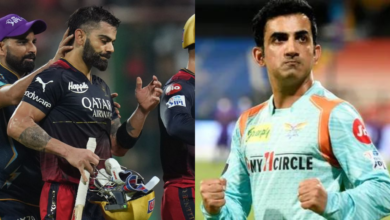
Former Indian captain Virat Kohli is one of the top players to watch out for in the upcoming Border Gavaskar Trophy series against the Australian cricket team. The 34-year-old stalwart was long been criticized for not upping his ante owing to his mediocre form in international cricket.
Nevertheless, the right-handed batsman eventually rediscovered his lost mojo back in the Asia Cup tournament held in UAE last year. He scored his maiden T20I century and also finished the tournament as the leading run-getter of Team India.
Besides that, he went on to finish the ICC Men’s T20 World Cup 2022 tournament as the leading run-getter. He scored 296 runs including four fifties. The right-handed batter will be back in action for the Test series against the Aussies.
Virat Kohli loves playing against the Aussies and his record against them serves as a testament to this fact. He has played 20 Tests against Australia wherein he scored 1682 runs at an average of 48.05 including seven centuries and five fifties to his name.
Rashid Latif warns Virat Kohli ahead of the Border Gavaskar Trophy series
Former Pakistan captain Rashid Latif has literally warned Virat Kohli to be wary of Pat Cummins’ threat in the upcoming Border Gavaskar Trophy series, which begins on February 9 (Thursday) at VCA Stadium in Nagpur.
Speaking on his YouTube channel, he echoed that Pat Cummins got the better of Virat Kohli on five occasions in six matches. Cummins did ruffle Kohli’s feathers in the six meetings and it will be quite an exciting and intriguing contest when these two lock horns with each other once again.
Latif further added that the battle between Cummins and Kohli will be an interesting one to watch for the fans. Last but not least, he highlighted that Australia’s Test captain will be a threat irrespective of whether the ball is new or reversing.
Meanwhile, Kohli will be looking forward to ending his Test century drought in the upcoming Test series. The last time when Kohli scored his 27th Test century was against Bangladesh in 2019.



